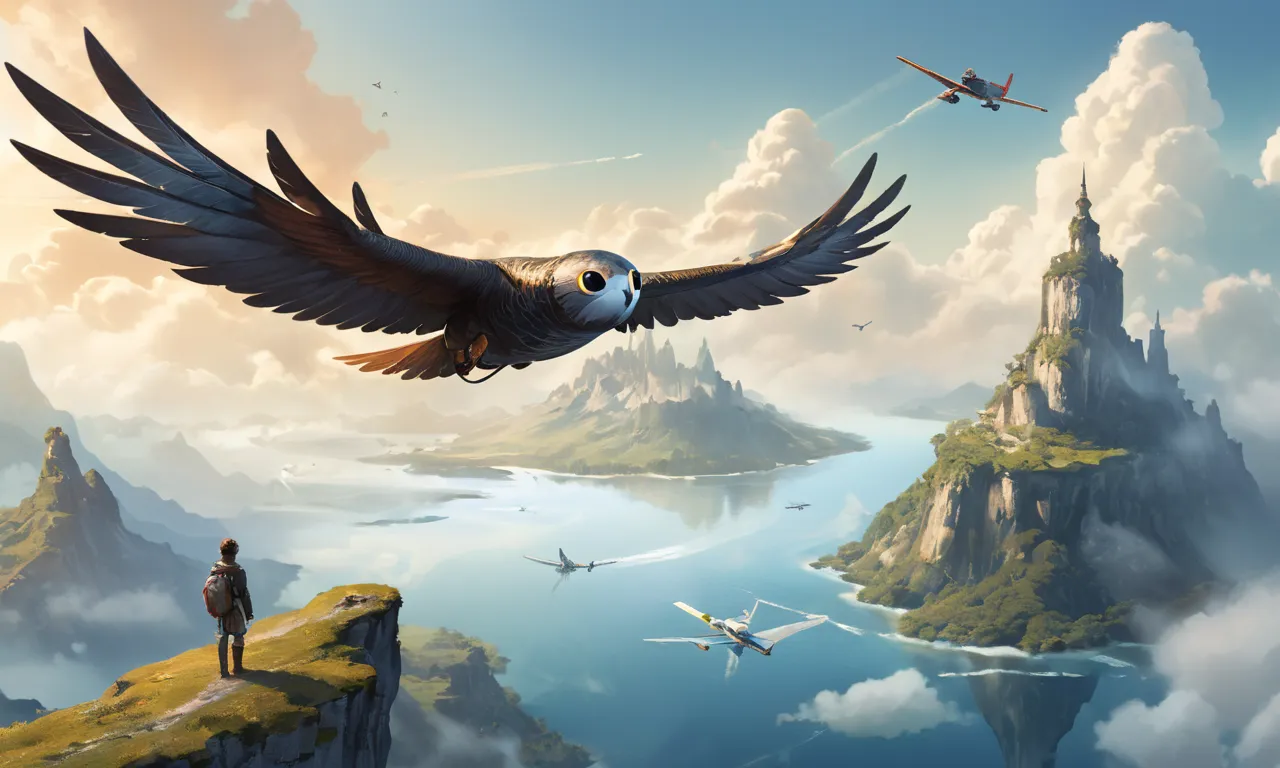
Few things inspire awe, wonder, and fascination as much as the dream of flying. Since ancient times, humans have looked to the skies with both fear and desire, seeking to conquer the heavens and travel at speeds that were once deemed impossible. This article will delve into the history of aviation, examining how we got here and where we might be headed in the future. We’ll explore key milestones, influential figures, and technological advancements that have shaped our understanding of flight.
The Early Days: From Birds to Balloons
The human desire to fly has its roots in ancient mythology and folklore. Stories of Icarus and Daedalus in Greek mythology, or the legend of Bellerophon and Pegasus from Greek heroic legends, all speak to our fascination with soaring through the air.
In reality, it wasn’t until the 18th century that humans began experimenting with flight machines. Sir George Cayley is often regarded as the father of modern aviation, having conducted extensive research and experiments on gliders in the early 1800s. However, it was only in the latter half of the century that we saw significant progress towards powered flight.
One pivotal moment came when Montgolfier brothers invented the hot air balloon in 1783. This invention allowed humans to leave the ground for short periods but didn’t offer much control over direction or altitude. Despite its limitations, the hot air balloon marked an important step towards achieving human flight.
The Wright Brothers: The Dawn of Powered Flight
While many inventors and visionaries worked diligently on creating a machine capable of powered flight during the 19th century, it was two brothers from Dayton, Ohio – Orville and Wilbur Wright – who succeeded in this endeavor. In December 1903, they made their first successful powered flight at Kitty Hawk, North Carolina.
Their invention, known as the Wright Flyer, featured a combination of innovative design elements, such as three-axis control (pitch, roll, and yaw), which allowed pilots to steer the aircraft precisely. This breakthrough marked the beginning of modern aviation.
The Golden Age of Aviation: Commercial Flights Take Off
Following the Wright brothers’ achievement, commercial aviation quickly began to take off (pun intended). By 1914, there were over 60 airlines operating across Europe and North America. The first transatlantic flight occurred in 1919 when John Alcock and Arthur Brown completed a non-stop flight from Newfoundland to Ireland.
The 1920s and ’30s saw the rise of legendary figures like Amelia Earhart, who became the first woman to fly solo across the Atlantic Ocean in 1932. Meanwhile, advancements in aircraft design led to faster and more efficient planes, paving the way for regular commercial flights around the world.
The Jet Age: Faster, Higher, Farther
In 1939, British engineer Frank Whittle invented the jet engine, which revolutionized aviation by allowing planes to travel at higher speeds than ever before. After World War II, commercial jets like the Boeing 707 and Douglas DC-8 quickly became the norm, offering passengers increased comfort and speed compared to propeller-driven aircraft.
This era also saw significant advancements in military aviation, including supersonic flight with the introduction of the Concorde in 1969. Although it was primarily used for transatlantic passenger service, the Concorde remains a symbol of innovation and technical prowess.
The Future: Autonomous Flight and Beyond
Today, we stand on the cusp of an exciting new era in aviation. Advances in technology are making autonomous flight a reality, with companies like Boeing and Airbus developing self-flying drones for various purposes such as package delivery or surveillance.
Beyond autonomous flight, we’re also witnessing the emergence of electric aircraft, which could significantly reduce noise pollution and carbon emissions associated with traditional jet engines. Additionally, there is growing interest in space tourism, with companies like SpaceX and Blue Origin working towards making suborbital flights accessible to the general public.
In conclusion, the dream of flying without wings has come a long way since ancient times. From hot air balloons to supersonic jets, humans have continually pushed the boundaries of what’s possible in aviation. As we look towards the future, it’s clear that there are still many exciting developments on the horizon, from autonomous flight to space tourism. So buckle up, because the sky’s not just the limit – it’s where our imagination takes us next.










